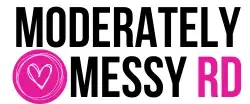The flexitarian diet is a “more flexible” way to consume more plant-based meals without completely going vegetarian. Learn about all the benefits of a Flexitarian diet with a sample 4-day meal plan prioritizing protein to keep you fuller for longer and increase overall protein consumption.
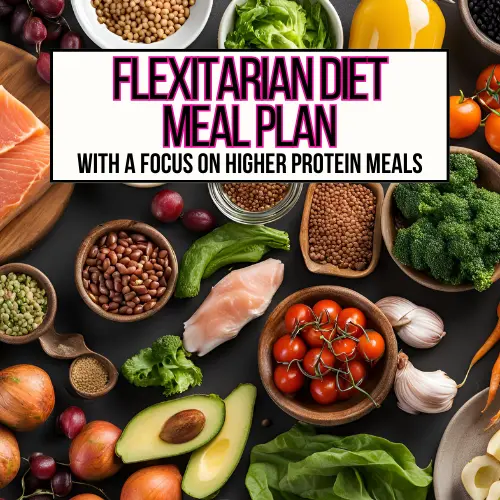
There are no clear cut rules or guidelines with the flexitarian diet. The goal is to focus on more plant-based meals with meat and fish in moderation. It is very similar to a Mediterranean diet but with more of a focus on plant-based protein sources.
Not only is meat delicious and often a staple in most diets, but it is considered a high quality protein source. Those wanting to try a flexitarian diet may be apprehensive given the popularity of protein these days. Therefore, this meal plan follows the framework of a flexitarian diet with a focus on increasing protein as well.
Benefits of a Flexitarian Diet
- Overall health and well-being. A review of 25 studies suggested the flexitarian diet can provide benefits for body weight, improved markers of metabolic health, blood pressure, and reduced risk of type 2 diabetes.
- More sustainable than a vegetarian diet. A recent 2023 study found that those who were allowed meat in moderation were more satisfied and more likely to follow a more plant-based diet as compared to a vegetarian diet. Both the vegetarian and flexitarian groups experienced increased overall vegetable intake.
- Achieve a healthier lifestyle without giving up meat completely. An abundance of research has shown that consuming more plant-based meals correlates with higher fiber and anti-oxidant consumption – which is directly related to improved health outcomes.
Flexitarian Diet Tips and Ideas
Create a weekly meal plan so it’s easier to stick to this new “lifestyle” change. I find that having “theme nights” can help with meal planning by adding some structure to your week. Your whole family will know what to expect each week and it’s a smart way to ease into the more plant-based eating approach!
If budget is a concern utilize frozen and canned vegetables to save some money. Spend a little time cutting up vegetables and fruit for the week to streamline the cooking process on busy nights.
Experiment with different plant-based protein sources such as veggie burgers, beans, lentils, tofu, tempeh, seitan, nuts and seeds. I know many people are turned off by tofu, however, it could just be the way you’ve been preparing it. Try different recipes – I prefer crispy tofu myself.
5-Day Sample Flexitarian Diet Meal Plan
The aim for this meal plan was to reach at least 20 grams of protein for each meal, which is “ideal” to sustain fullness and prevent the loss of lean muscle mass.
Day One: Meatless Monday
Breakfast
The key with selecting a breakfast option on a flexitarian diet is limiting your bacon and sausage consumption as eggs are not restricted. It’s also a good idea to incorporate more fruits and veggies with breakfast, too!

This chia breakfast bowl is so easiest to prep with 22 grams of protein and 11 grams of fiber. It is topped with fresh fruit, mixed nuts for healthy fats, and a drizzle of honey.
Lunch
An Autumn Harvest Bowl by Summer Yule featuring kale, roasted Brussels sprouts, sweet potatoes, peppers, and roasted chickpeas with a drizzle of tahini dressing. The chickpeas are the star of this dish – providing 22 grams of protein per serving.
For an easier lunch option, try just a simple chickpea, cucumber and quinoa salad with Italian dressing.
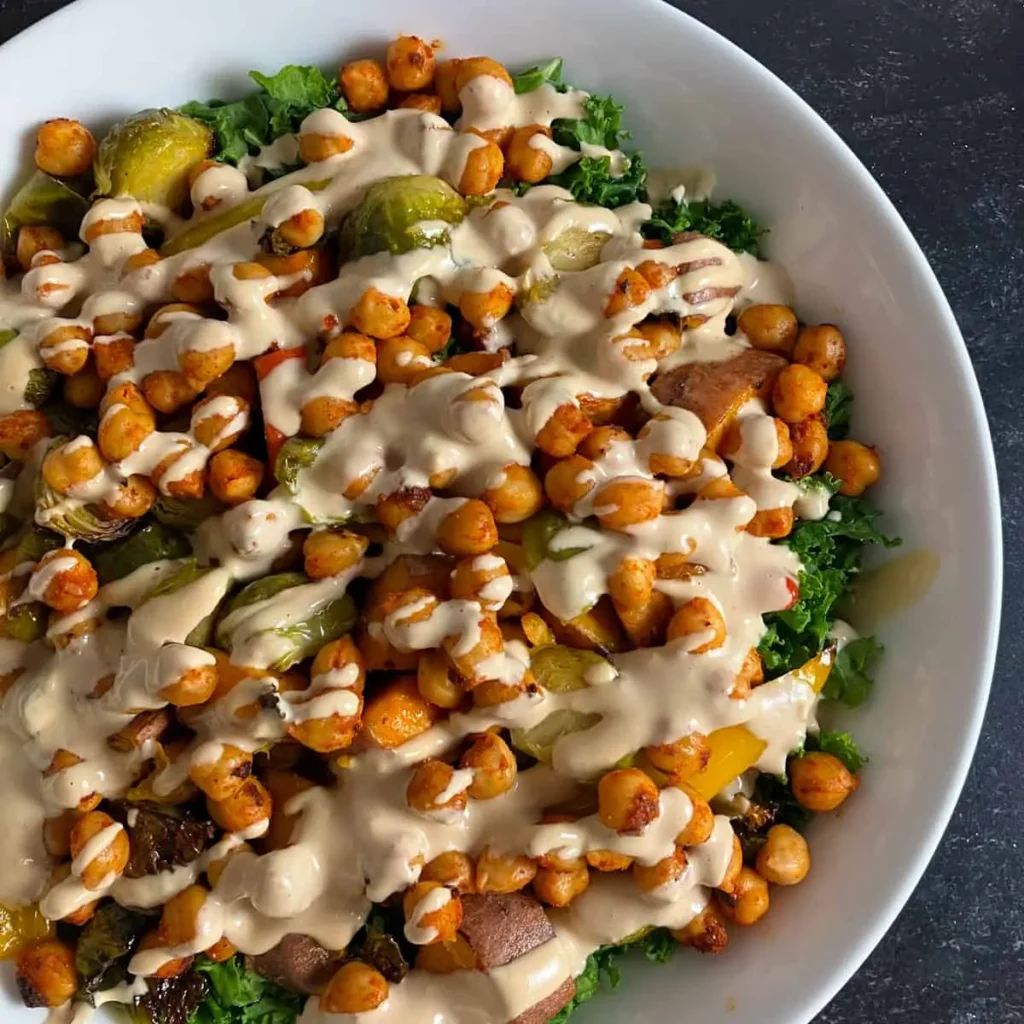
Dinner
Try this Tofu and Edamame Power Bowl which combines two plant-based protein sources to provide a total of 22 grams of protein per serving. It’s served over a bed of quinoa and with a healthy, homemade stir-fry sauce.
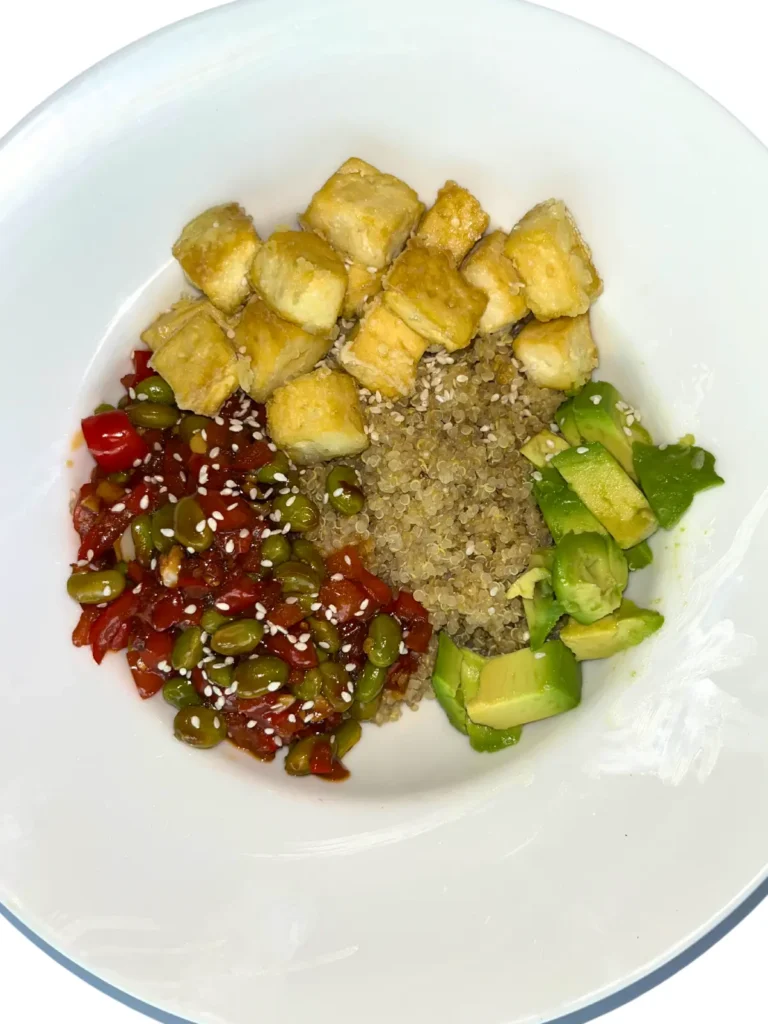
Snack
Apple slices with peanut butter or almond butter.
Day Two: Fish Focused Tuesdays
One of my favorite things about a flexitarian diet is that you can still prioritize fish! It’s recommended to consume at least two servings of oily fish, like salmon or tuna, weekly because it’s one of the best (and only) sources of vitamin D and the omega-3 fatty acids DHA and EPA. Both nutrients can impact our mental health, boost immunity, lower inflammation and reduce the risk of cognitive decline.
Breakfast
High Protein Vegan Oatmeal by Bites with Blair is an easy, high protein breakfast for busy mornings. It’s packed with 30 grams of protein and 13 grams of fiber using a plant-based protein powder. Plus, it’s easily customizable – add different toppings everyday for more variety.
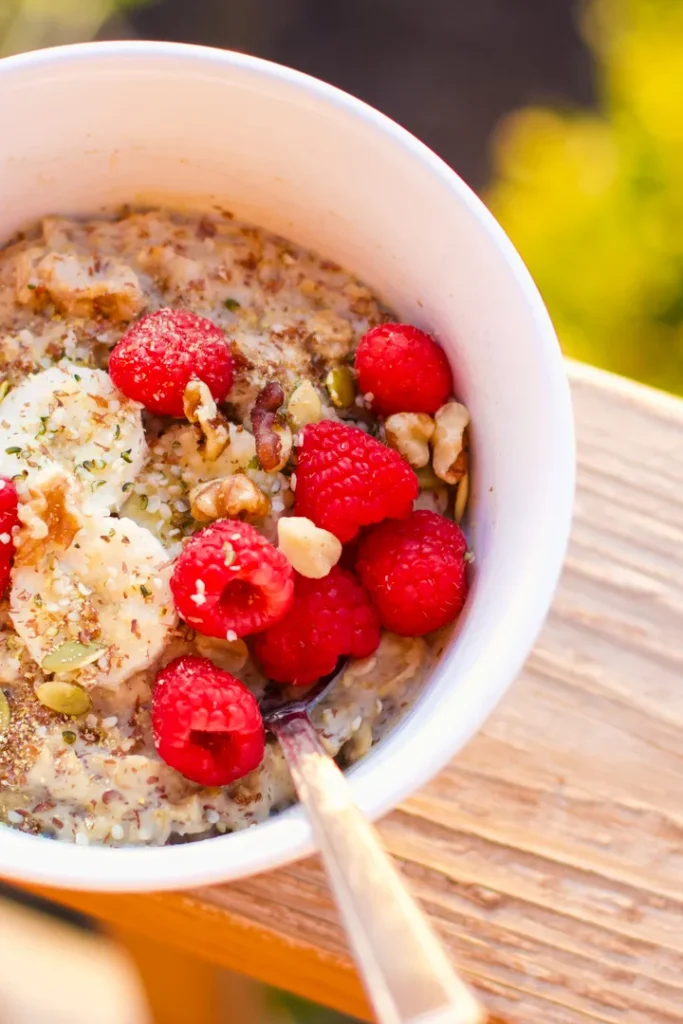
Lunch
Summer Roll Bowl Meal Prep by That Vegan Babe. An easy bowl recipe that’s a perfect cold lunch combining edamame, tofu, rice noodles, cucumber, carrots and a spicy peanut sauce. Make this recipe in advance and store in the fridge for up to 5 days.
Dinner
Sheet Pan Salmon and Asparagus by Get Inspired Everyday. A super quick and easy sheet pan dinner featuring roasted salmon and asparagus with a honey Dijon dressing. Dinner is on the table is just 15 minutes!
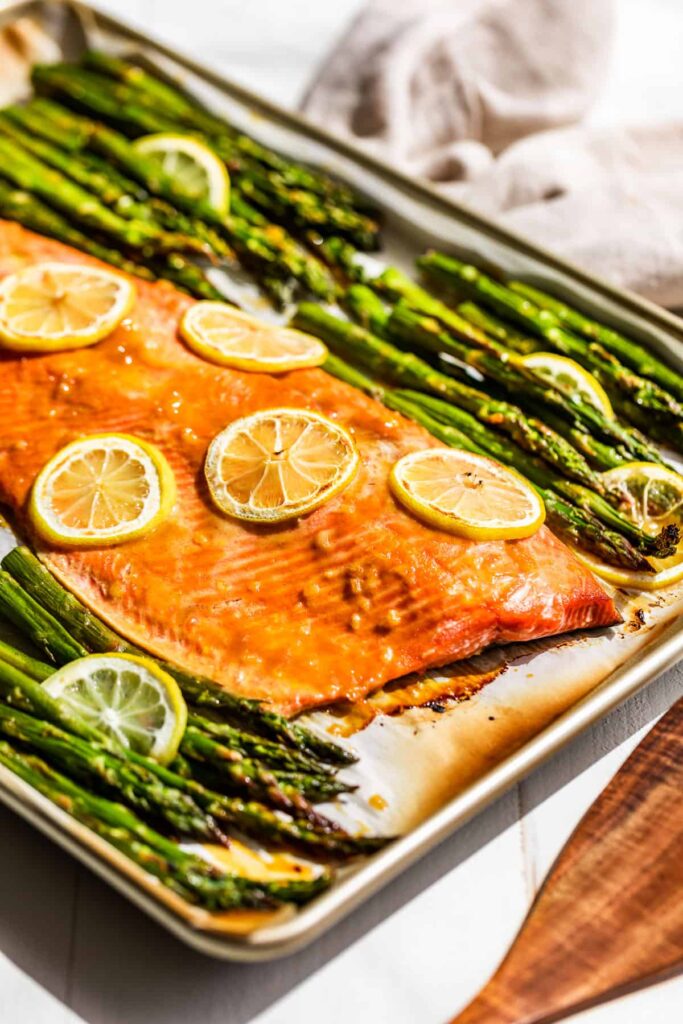
Snack
Easy Cottage Cheese Chocolate Pudding by PCOS Nutritionist Alyssa. A delicious, high protein pudding that tastes similar to a chocolate mousse. It’s made with cottage cheese, cocoa, honey and vanilla extract with 13 grams of protein per serving.
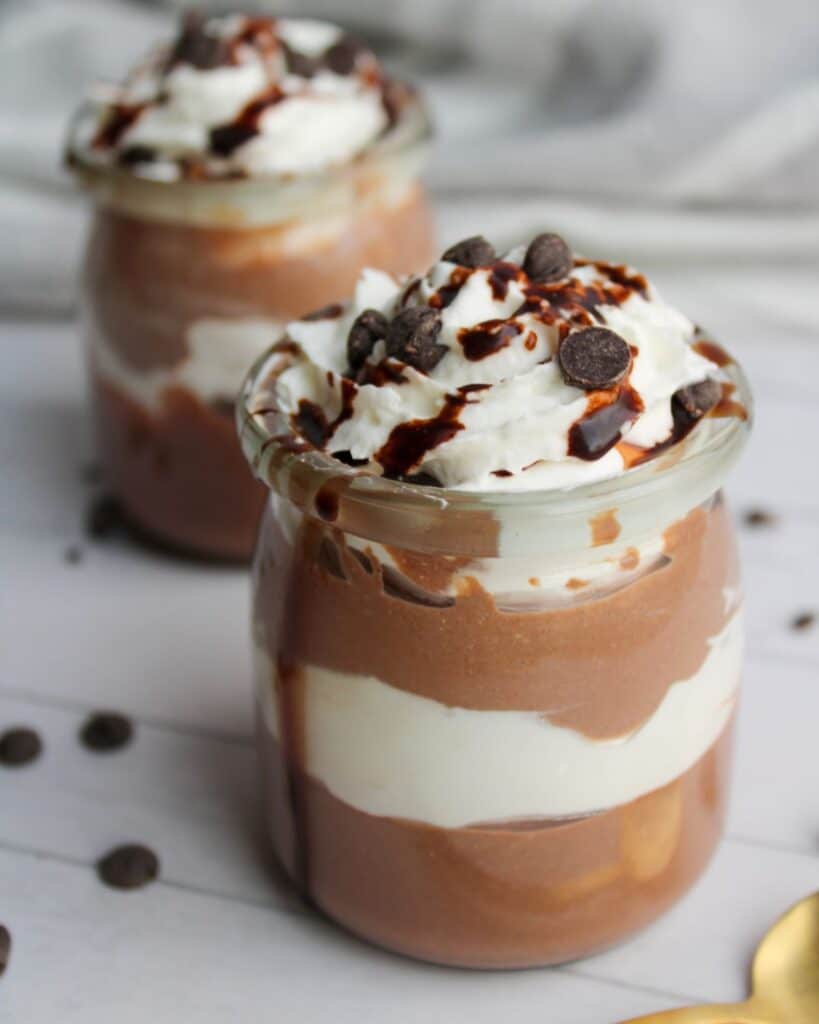
Day Three: Focus on Lean Protein
Breakfast
This Savory Quinoa Breakfast Bake comes together quickly and makes 4 generous servings for easy meal prep. It’s packed with nutritious ingredients like eggs, cottage cheese, black beans and quinoa! Just one slice has 26 grams of protein.
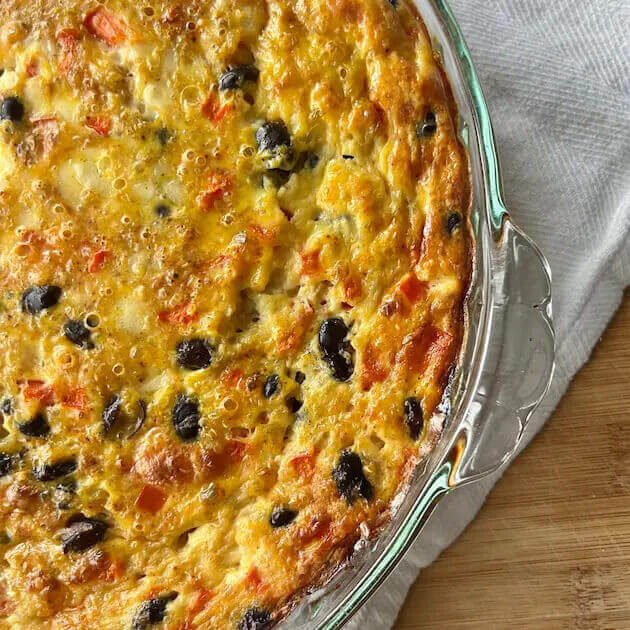
Lunch
Throw together a quick chicken salad or tuna salad wrap with fresh fruit. You could even sub the mayo for Greek yogurt to add more protein.
Dinner
Ground Turkey and Vegetable Soup by Craving Something Healthy. A delicious, cozy soup with lean ground turkey, nutritious vegetables and fiber-packed beans.
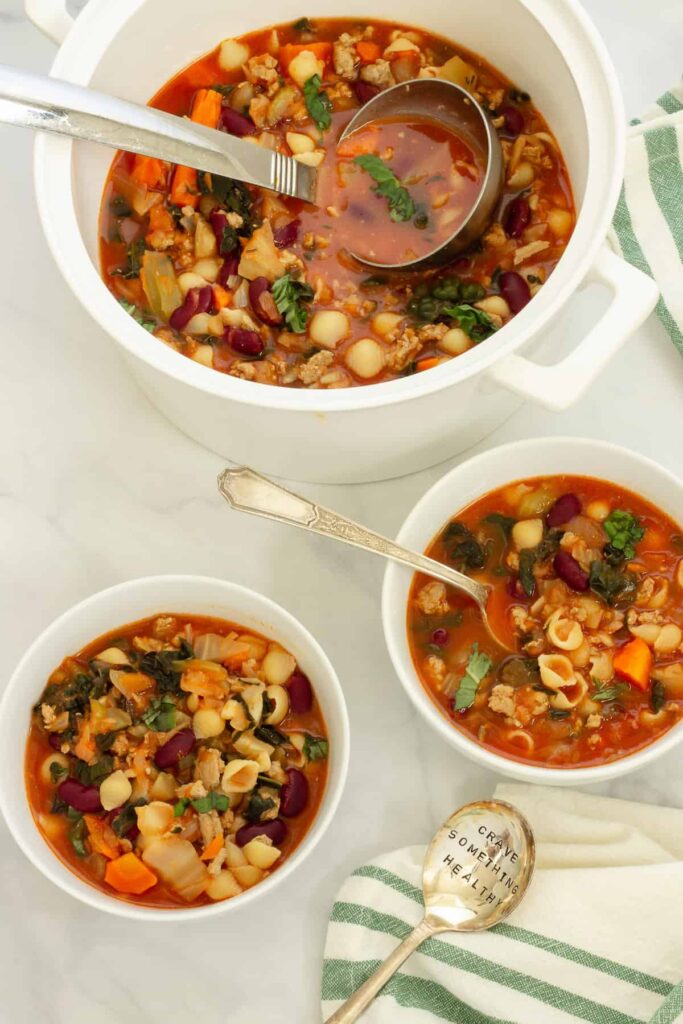
Snack
Greek yogurt parfait topped with fresh berries and mixed nuts.
Day Four: Meals with Less Meat
Meals like salads, soups, stir-fries, pizza, and pasta typically contain less meat and are more veggie-focused. This is a great way to consume less meat without eliminating it completely. I frequently use this strategy with my chronic kidney disease patients.
Focus on those little additions to increase protein intake without increasing the portion size of chicken or beef. Examples include Greek yogurt, cottage cheese, eggs, nutritional yeast, nuts, seeds, beans, legumes, ancient grains and pasta alternatives.
Breakfast
Give this Berry Cheesecake Overnight Oats recipe a try for an easy to prep breakfast with over 30 grams of protein. It’s one of my most popular recipes and ideal for a grab-and-go option on hectic mornings.
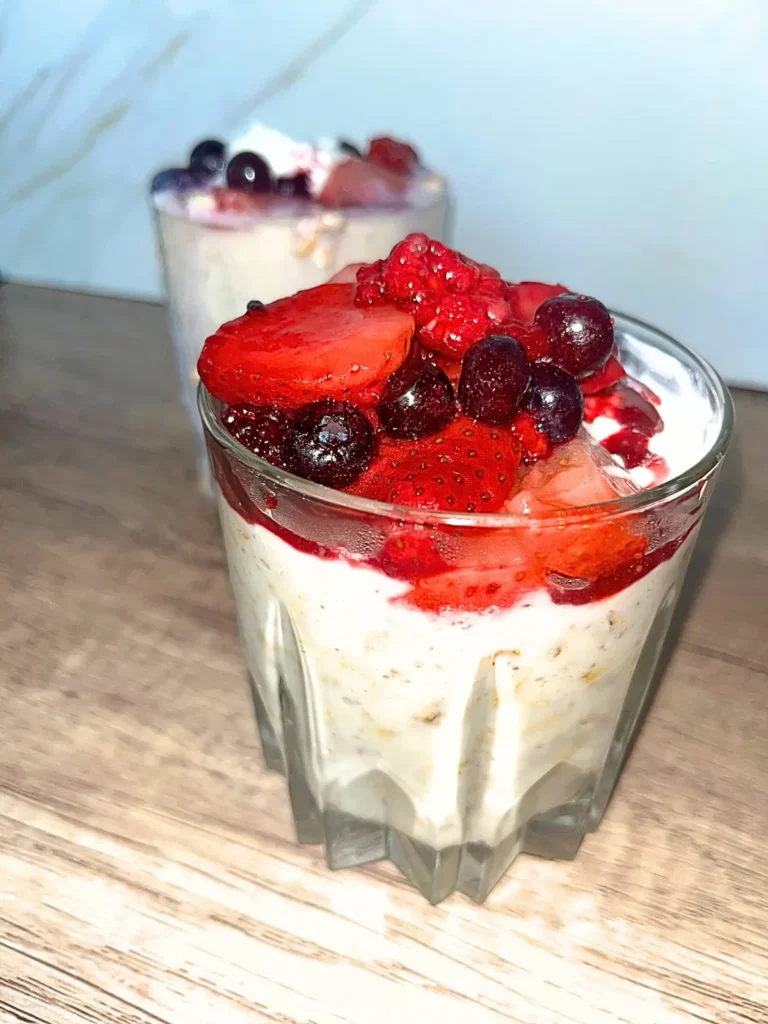
Lunch
This Mediterranean Chicken, Cucumber and Tomato Salad comes together quickly with rotisserie or already cooked chicken. Yes, there is chicken – but it’s packed with fresh veggies and chickpeas to increase the protein content. It even utilizes a store-bought Olive Garden dressing for convenience.
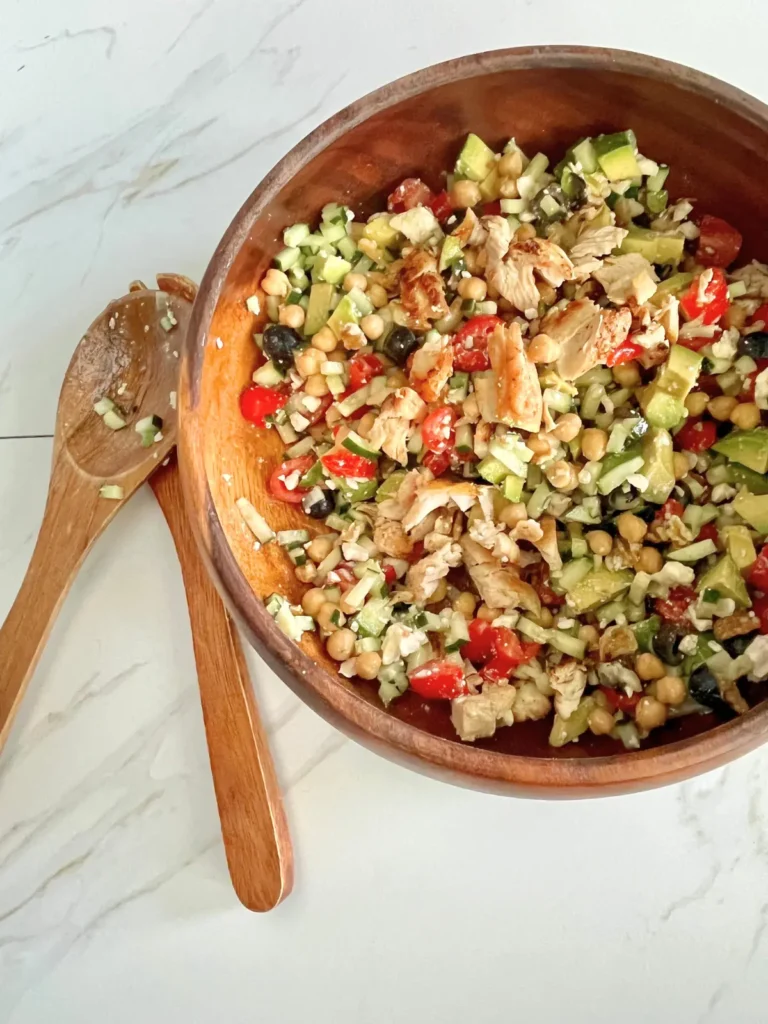
Dinner
This Buffalo Chicken Crockpot Pasta uses a high protein pasta alternative plus cottage cheese for a creamy and delicious sauce (you won’t even taste it). For a dairy-free option, try a grilled chicken or salmon salad (stick to 3 ounces) with nuts and beans for extra protein.
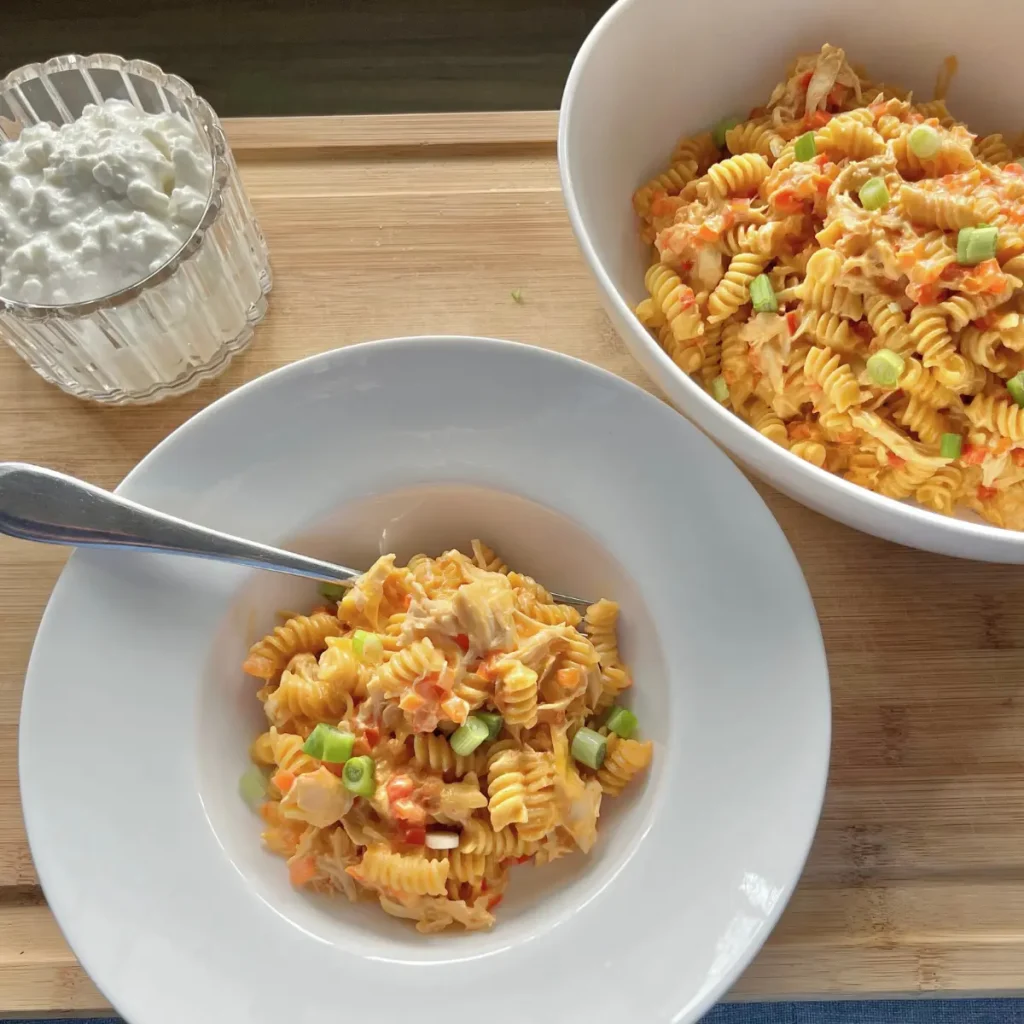
Snack
Carrots with hummus and popcorn.
Will You Try It?
I admittedly am not interested in a vegetarian diet, however, I can definitely get on board with a more flexitarian lifestyle. It allows for more flexibility with no strict rules, yet the focus on consuming more plant-based meals is still prominent. In my opinion, it’s a much more sustainable approach to a plant-forward diet if you’re a meat lover. Will you try it?
